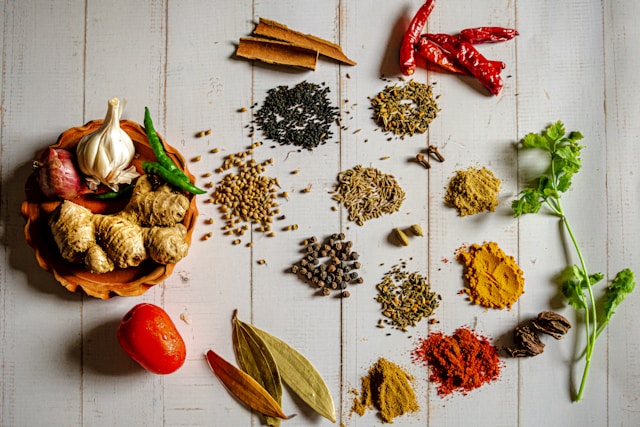
By Daniel Zane Bryant, author of “Living with Food Allergies: A Complete Lifestyle Guide” (available on Amazon at https://www.amazon.com/dp/B0G2BcGB2K)
Navigating food allergies might initially feel overwhelming, yet it presents an exciting opportunity to reimagine familiar recipes and discover innovative culinary techniques. The secret to thriving with dietary restrictions isn’t about limitation; it’s about adaptation and creativity. Today’s home cooks have access to an unprecedented array of alternative ingredients that deliver both safety and sensational taste.
Rethinking Your Pantry
The modern allergy-conscious kitchen operates on a foundation of strategic substitution. Each replacement ingredient brings its own characteristics to recipes, sometimes even enhancing the original dish. Understanding how different alternatives react with other ingredients during cooking empowers you to make confident choices that preserve both texture and taste. This knowledge transforms meal preparation from a source of anxiety into an adventure in culinary innovation.
Dairy-Free Discoveries
When eliminating dairy, the variety of plant-based options provides remarkable versatility. Almond milk brings subtle sweetness to morning cereals and smoothies, while hemp milk delivers protein-rich nutrition. Coconut cream whipped with maple syrup creates decadent desserts, and olive oil replaces butter beautifully in Mediterranean-inspired dishes. Creating homemade nut-based cheeses using soaked cashews, lemon juice, and seasonings yields spreads that rival traditional dairy versions.
For yogurt substitutes, cultured coconut milk creates a tangy complexity perfect for breakfast parfaits. These alternatives frequently contribute to additional minerals and beneficial plant compounds absent from conventional dairy products.
Beyond Eggs
Replacing eggs demands an understanding of their specific role in each recipe. Chia seeds soaked in water form a gel-like consistency ideal for holding ingredients together in veggie burgers. Silken tofu blended until smooth creates custard-like textures in pies and quiches. Carbonated water adds lift to pancakes, while pureed white beans provide structure in brownies without altering taste.
Turmeric mixed with plant milk mimics the golden color of scrambled eggs, especially when combined with crumbled tofu. Each alternative brings distinct advantages; flax adds omega-3s, while bananas contribute natural sweetness and potassium.
Flourishing Without Gluten
Creating satisfying gluten-free baked goods involves strategic flour combinations. Buckwheat flour imparts earthy depth to pancakes; quinoa flour adds protein to muffins, and coconut flour absorbs moisture beautifully in cakes. Potato starch lightens heavy batters, while ground oats provide familiar whole-grain texture.
Binding agents become crucial for psyllium husk powder to help bread maintain structure, while guar gum prevents crumbling in cookies. These specialized ingredients, once difficult to source, now appear regularly in mainstream grocery stores.
Seeds Over Nuts
Seed-based alternatives offer comparable richness without triggering nut allergies. Roasted sunflower seeds ground fine create flour for baking, while whole seeds add crunch to salads. Sesame seed paste enriches hummus and salad dressings. Hemp hearts sprinkled over oatmeal provide complete protein, and ground flaxseed mixed into smoothies boosts nutrition without overwhelming flavors.
Watermelon seed butter emerges as an unexpected spread option, offering magnesium and iron alongside its mild taste. These alternatives often cost less than tree nut products while delivering impressive nutritional profiles.
Building Confidence
Successful allergy-friendly cooking develops through gradual exploration. Begin with simple substitutions in familiar recipes before attempting complex transformations. Document your experiments, noting ratios and cooking times that yield optimal results. Online communities dedicated to allergy cooking provide invaluable support and recipe inspiration.
Stock your pantry with versatile alternatives, allowing spontaneous meal creation without worry. Label homemade items clearly, especially when cooking for others with allergies. Invest in quality storage containers to maintain freshness of specialty ingredients.
Embracing the Journey
Adapting recipes for food allergies cultivates resilience and creativity in the kitchen. Each successful substitution builds confidence, gradually expanding your culinary repertoire. This journey often leads to discovering preferred alternatives that become permanent fixtures regardless of dietary needs. The skills developed through allergy-conscious cooking enhance overall kitchen competence and nutritional awareness.
For comprehensive guidance on thriving with food allergies beyond the kitchen, including restaurant navigation, travel planning, and social situations, explore my book “Living with Food Allergies: A Complete Lifestyle Guide,” available on Amazon at https://www.amazon.com/dp/B0G2B6GB2K.




